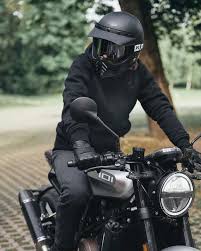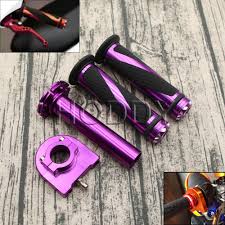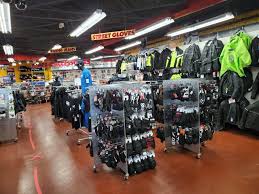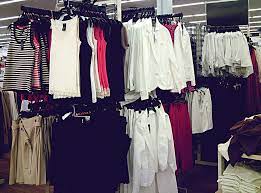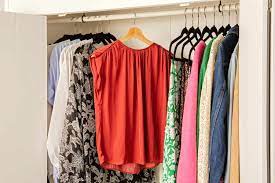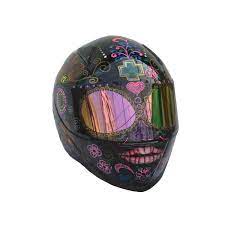
Women’s Motorcycle Helmets: Combining Style and Safety
When it comes to riding motorcycles, safety should always be a top priority. And for women who are passionate about hitting the open road on two wheels, finding the perfect helmet that not only provides protection but also reflects their personal style is essential. Enter women’s motorcycle helmets – a growing market catering specifically to female riders.
Gone are the days when motorcycle helmets were solely designed with functionality in mind. Today, manufacturers have recognized the need to offer a wide range of helmet options that cater to different tastes and preferences. Women’s motorcycle helmets now come in various styles, colours, and designs, allowing riders to express their individuality while keeping safety at the forefront.
One of the key considerations for women when choosing a helmet is its fit. Women tend to have smaller head sizes compared to men, so it’s crucial to find a helmet that offers a snug and secure fit without compromising comfort. Many brands now offer helmets specifically designed for women, taking into account factors such as head shape and size.
In addition to providing an optimal fit, women’s motorcycle helmets often feature stylish designs that appeal to female riders. From sleek and minimalist designs to bold patterns and vibrant colours, there is a wide array of options available. This allows women riders to find a helmet that not only enhances their safety but also complements their personal style.
Moreover, many manufacturers understand that women often have longer hair than men. As such, they have incorporated features into their helmets that accommodate ponytails or provide extra space for hair without compromising the helmet’s integrity or safety standards.
It’s important to note that while style is an important factor when selecting a women’s motorcycle helmet, safety should never be compromised. Look for helmets that meet industry standards and certifications such as DOT (Department of Transportation) or ECE (Economic Commission for Europe) markings, ensuring they have passed rigorous testing procedures.
When purchasing a women’s motorcycle helmet, it’s advisable to visit a reputable dealer or try on different options in person. This allows you to assess the fit, comfort, and overall feel of the helmet before making a decision. Remember, a properly fitted helmet is crucial for optimal protection in case of an accident.
In conclusion, women’s motorcycle helmets have come a long way in terms of combining style and safety. Female riders now have access to a wide range of options that not only provide excellent protection but also reflect their personal taste and preferences. With the right helmet, women can hit the road confidently, knowing they are both safe and stylish. So gear up, ladies, and ride with pride!
5 Benefits of Women’s Motorcycle Helmets: Enhanced Comfort, Customizable Features, Improved Visibility, Reduced Fatigue, and Stylish Designs
- Womens motorcycle helmets are specifically designed to fit a woman’s head shape, providing greater comfort and stability than a generic helmet.
- Many womens motorcycle helmets come with features such as adjustable vents and removable liners, making them more adjustable to the individual rider’s needs.
- Womens motorcycle helmets often have a wider field of view than generic helmets, allowing for better visibility when riding on busy roads or in low-light conditions.
- Womens motorcycle helmets are typically lighter in weight than generic models, reducing fatigue when riding for long distances or in hot weather.
- Many womens motorcycle helmet designs feature feminine colours and patterns that appeal to female riders, helping to make the ride more enjoyable and stylish!
Challenges Faced by Women’s Motorcycle Helmets: Accessibility, Fit, and Design Variety
- Women’s motorcycle helmets are often more expensive than men’s, making them less accessible to some riders.
- Women’s motorcycle helmets may not fit as snugly as men’s, meaning they could be less effective in a crash situation.
- Women’s motorcycle helmets may not have the same variety of styles and designs available as men’s, which can limit choice for female riders.
Womens motorcycle helmets are specifically designed to fit a woman’s head shape, providing greater comfort and stability than a generic helmet.
Women’s Motorcycle Helmets: A Perfect Fit for Comfort and Stability
When it comes to riding motorcycles, comfort and stability are crucial factors that can greatly enhance the overall experience. Women’s motorcycle helmets have emerged as a game-changer in this regard, offering a tailored fit specifically designed to accommodate the unique shape of a woman’s head.
One of the main advantages of women’s motorcycle helmets is their ability to provide greater comfort compared to generic helmets. Women often have smaller head sizes and different head shapes compared to men, which can make finding a well-fitting helmet a challenge. However, manufacturers have recognized this need and now offer helmets that cater specifically to women riders.
These specially designed helmets take into account the contours of a woman’s head, ensuring a more secure and comfortable fit. The interior padding is strategically placed to accommodate the shape of a woman’s skull, providing optimal support while reducing pressure points. This superior fit not only enhances comfort during long rides but also minimizes distractions caused by an ill-fitting helmet.
In addition to comfort, women’s motorcycle helmets also offer improved stability on the road. The snug fit ensures that the helmet stays securely in place even during high-speed rides or windy conditions. This eliminates any unnecessary movement or shifting that could potentially compromise safety or distract the rider.
Furthermore, many women’s motorcycle helmets feature adjustable straps and retention systems that allow for fine-tuning the fit according to individual preferences. This level of customization ensures maximum stability and minimizes any discomfort caused by an improperly fitted helmet.
It is worth noting that while women’s motorcycle helmets prioritize comfort and stability, they never compromise on safety. These helmets undergo rigorous testing procedures to meet industry standards and certifications, ensuring they provide optimal protection in case of an accident.
In conclusion, women’s motorcycle helmets excel in providing greater comfort and stability compared to generic options. Their specific design takes into account the unique shape of a woman’s head, resulting in a secure and snug fit. With these helmets, female riders can enjoy their journeys with enhanced comfort, reduced distractions, and the peace of mind that comes from knowing they are well-protected on the road.
Many womens motorcycle helmets come with features such as adjustable vents and removable liners, making them more adjustable to the individual rider’s needs.
Many Women’s Motorcycle Helmets: Customizable Comfort for Every Rider
When it comes to finding the perfect motorcycle helmet, comfort is a crucial factor. And for women riders, having a helmet that can be adjusted to their specific needs is a game-changer. That’s why many women’s motorcycle helmets now come with features such as adjustable vents and removable liners, offering a customizable and comfortable fit for every individual rider.
One of the standout features of these helmets is the presence of adjustable vents. Riding in different weather conditions can be challenging, but having the ability to regulate airflow can make all the difference. With adjustable vents, women riders can control the amount of air entering their helmets, ensuring optimal ventilation and preventing discomfort caused by excessive heat or humidity.
Furthermore, removable liners are another fantastic feature found in many women’s motorcycle helmets. These liners not only provide extra cushioning and comfort but also allow riders to customize the fit according to their preferences. Whether it’s adjusting the thickness or replacing worn-out liners with new ones, this feature ensures that each rider can create a helmet that fits them perfectly.
The ability to adjust vents and remove liners may seem like small details, but they contribute significantly to overall comfort during those long rides. Women riders have different head shapes and sizes, so having these customizable options ensures that each individual can find their ideal fit.
Additionally, removable liners are also convenient when it comes to cleaning and maintenance. Being able to remove and wash them regularly helps keep the helmet fresh and hygienic, ensuring a pleasant riding experience every time.
It’s worth noting that not all women’s motorcycle helmets come with these features, so it’s essential to explore different brands and models before making a purchase. Look for helmets that offer adjustable vents and removable liners if customization and comfort are high on your priority list.
In conclusion, one of the significant advantages of many women’s motorcycle helmets is their ability to be adjusted according to individual riders’ needs. The presence of adjustable vents allows for optimal airflow regulation, while removable liners provide customizable cushioning and easy maintenance. With these features, women riders can enjoy a comfortable and personalized riding experience, ensuring that their helmet fits them like a glove. So gear up, ladies, and ride with comfort and confidence!
Womens motorcycle helmets often have a wider field of view than generic helmets, allowing for better visibility when riding on busy roads or in low-light conditions.
Enhancing Visibility: The Advantage of Women’s Motorcycle Helmets
When it comes to riding motorcycles, visibility is a crucial aspect of staying safe on the road. For women riders, choosing a helmet that offers an expanded field of view can make a significant difference in their overall riding experience. That’s where women’s motorcycle helmets come into play, offering a wider field of view compared to generic helmets.
Women’s motorcycle helmets are designed with the specific needs of female riders in mind. One notable advantage is their ability to provide a broader peripheral vision, allowing for better visibility when navigating through busy roads or riding in low-light conditions. This enhanced field of view enables women riders to have a clearer picture of their surroundings, making it easier to anticipate and react to potential hazards.
The wider field of view in women’s motorcycle helmets is achieved through thoughtful design and engineering. Manufacturers often incorporate larger visors or utilize advanced helmet shapes that optimize peripheral vision without compromising safety standards. This means that female riders can ride with confidence, knowing they have an unobstructed view of the road ahead and the traffic around them.
Better visibility not only improves safety but also enhances the overall riding experience for women motorcyclists. It allows them to fully immerse themselves in the thrill of the ride while maintaining awareness of their surroundings at all times. Whether it’s scanning for approaching vehicles, checking blind spots, or simply enjoying the scenic views, having a wider field of view adds an extra layer of comfort and confidence on the road.
It’s important to note that while women’s motorcycle helmets offer this advantage, safety should never be compromised. When choosing a helmet with an expanded field of view, ensure it meets industry standards and certifications such as DOT (Department of Transportation) or ECE (Economic Commission for Europe) markings. This ensures that you are getting a helmet that not only provides excellent visibility but also meets rigorous safety requirements.
In conclusion, women’s motorcycle helmets with a wider field of view offer a significant advantage for female riders. The improved visibility allows for better situational awareness, making it easier to navigate busy roads and low-light conditions. With these helmets, women can ride with confidence, knowing they have an unobstructed view of their surroundings. So gear up, ladies, and enjoy the road ahead with enhanced visibility and safety!
Womens motorcycle helmets are typically lighter in weight than generic models, reducing fatigue when riding for long distances or in hot weather.
One of the many advantages of women’s motorcycle helmets is their lighter weight compared to generic models. This feature brings multiple benefits, particularly for female riders who embark on long-distance journeys or face hot weather conditions.
The lighter weight of women’s motorcycle helmets significantly reduces fatigue during extended rides. Long hours on the road can be physically demanding, and a heavy helmet can add unnecessary strain to the neck and shoulders. By opting for a lighter helmet specifically designed for women, riders can enjoy a more comfortable experience, allowing them to focus on the thrill of riding rather than feeling weighed down.
Additionally, in hot weather conditions, a lighter helmet can make a significant difference in terms of comfort. Riding under the scorching sun can be challenging enough, and wearing a heavy helmet only exacerbates the discomfort. Women’s motorcycle helmets, with their lighter construction, promote better airflow and ventilation around the head. This helps to keep riders cooler and more refreshed during rides in hot climates.
Moreover, reduced weight does not mean compromising safety. Women’s motorcycle helmets undergo rigorous testing to meet industry standards and certifications. They are designed with advanced materials that ensure optimal protection while keeping weight to a minimum.
In conclusion, the lighter weight of women’s motorcycle helmets offers distinct advantages for female riders. It minimizes fatigue during long rides and provides enhanced comfort in hot weather conditions without compromising safety. Choosing a helmet specifically designed for women not only ensures protection but also enhances overall riding enjoyment. So gear up with a lightweight helmet and hit the road with confidence!
Many womens motorcycle helmet designs feature feminine colours and patterns that appeal to female riders, helping to make the ride more enjoyable and stylish!
Many women’s motorcycle helmet designs have embraced feminine colours and patterns, adding a touch of style and individuality to the riding experience. Gone are the days when helmets were only available in dull and monotonous shades. Today, female riders have a plethora of options that allow them to express their personality while staying safe on the road.
From vibrant pinks and purples to elegant floral patterns, these helmets cater specifically to the tastes of female riders. The inclusion of feminine colours and designs helps create a sense of empowerment and adds an extra level of enjoyment to each ride. After all, who says safety can’t be stylish?
These visually appealing designs not only make women’s motorcycle helmets stand out but also contribute to a greater sense of identity for the rider. They allow female riders to showcase their unique style and individuality while enjoying their passion for motorcycling.
Moreover, these eye-catching designs can help foster a sense of camaraderie among female riders. When fellow riders spot a woman sporting an intricately designed helmet, it often sparks conversations and connections within the motorcycling community. It becomes an opportunity for shared experiences, advice, and even forming lasting friendships.
While style is undoubtedly important when choosing a helmet, it’s crucial not to overlook safety features. Women’s motorcycle helmets with feminine colours and patterns still adhere to strict safety standards set by regulatory bodies such as DOT or ECE. So rest assured that you can combine fashion with functionality without compromising your protection on the road.
In conclusion, the availability of women’s motorcycle helmets featuring feminine colours and patterns has added an exciting dimension to riding gear. These stylish designs not only appeal to female riders but also enhance their overall experience on two wheels. So go ahead, embrace your unique style with a helmet that not only keeps you safe but also makes every ride more enjoyable and stylish!
Women’s motorcycle helmets are often more expensive than men’s, making them less accessible to some riders.
One of the challenges faced by female riders when it comes to women’s motorcycle helmets is the price. It is unfortunate that women’s helmets are often priced higher than their male counterparts, making them less accessible to some riders.
The higher cost of women’s motorcycle helmets can be attributed to various factors. One reason is the smaller market size for women’s gear compared to men’s gear. Manufacturers may produce fewer units of women’s helmets, resulting in higher production costs per unit. Additionally, the demand for stylish and well-fitting helmets designed specifically for women may drive up the price.
This price disparity poses a significant obstacle for female riders who may already be facing financial constraints or budget limitations. Safety should never be compromised, but it is disheartening that some riders may have to choose between a helmet that fits properly and one that they can afford.
However, it is important to note that not all women’s motorcycle helmets are excessively expensive. There are still affordable options available on the market, and it’s worth researching different brands and models to find a helmet that offers a balance between cost and quality.
In order to address this issue, manufacturers and retailers should strive towards making women’s motorcycle helmets more accessible by offering a wider range of affordable options without compromising safety standards. Increasing competition in the market could also help drive down prices and make these essential safety gears more affordable for all riders.
Furthermore, advocating for gender-neutral pricing policies could help eliminate any discriminatory pricing practices based on gender. Helmets should be priced based on their features, materials, and overall quality rather than being influenced by gender-specific marketing strategies.
In conclusion, while it is unfortunate that women’s motorcycle helmets are often more expensive than men’s, efforts should be made within the industry to address this issue. Making affordable options more readily available will ensure that all riders have access to high-quality protective gear without breaking the bank. Safety on the road should never be compromised due to affordability constraints.
Women’s motorcycle helmets may not fit as snugly as men’s, meaning they could be less effective in a crash situation.
Women’s Motorcycle Helmets: Ensuring a Snug Fit for Optimal Safety
When it comes to motorcycle safety, finding a helmet that fits properly is crucial. While the market for women’s motorcycle helmets has expanded significantly in recent years, there is a valid concern that they may not fit as snugly as men’s helmets. This raises questions about their effectiveness in crash situations.
It is important to acknowledge that women generally have smaller head sizes compared to men. As a result, finding a helmet that provides an ideal fit can be more challenging. Ill-fitting helmets can compromise safety by reducing the level of protection they offer during an impact.
However, it is essential to note that this concern applies to any helmet, regardless of gender. A poorly fitting helmet, whether designed for men or women, can pose risks in an accident scenario. The key lies in ensuring that women’s motorcycle helmets are designed with careful consideration of the unique head shape and size of female riders.
Manufacturers have recognized this issue and are making efforts to address it. Many brands now offer helmets specifically tailored for women, taking into account their distinct anatomical features. These helmets often feature adjustable padding or additional sizing options to ensure a more secure and comfortable fit.
To mitigate the potential con of ill-fitting women’s motorcycle helmets, it is crucial for riders to take proactive measures when selecting their headgear. It is advisable to visit reputable dealers or try on different helmet models in person before making a purchase. This allows riders to assess the fit and comfort firsthand, ensuring they find a helmet that provides optimal protection.
Additionally, understanding how to properly measure one’s head size can greatly assist in finding the right fit. Taking accurate measurements around the widest part of the head and consulting size charts provided by manufacturers can help guide riders towards suitable options.
Ultimately, while there may be concerns regarding the fit of women’s motorcycle helmets compared to those designed for men, it is important to remember that safety should always be the top priority. By being mindful of proper sizing, seeking out helmets specifically designed for women, and choosing reputable brands that meet safety standards, female riders can minimize any potential drawbacks and ensure they have a helmet that fits snugly and offers optimal protection in a crash situation.
Riding a motorcycle is an exhilarating experience, but it’s essential to prioritize safety at all times. With the right precautions and careful consideration, women can confidently enjoy their rides knowing they have chosen a helmet that provides both style and effective protection on the road.
Women’s motorcycle helmets may not have the same variety of styles and designs available as men’s, which can limit choice for female riders.
Women’s Motorcycle Helmets: Seeking More Variety in Styles and Designs
While the market for women’s motorcycle helmets has undoubtedly expanded in recent years, one con that some female riders may encounter is the limited variety of styles and designs compared to their male counterparts. This can potentially limit the choices available for women when it comes to selecting a helmet that truly reflects their personal style.
Traditionally, motorcycle helmets were predominantly designed with male riders in mind, resulting in a greater availability of styles and designs catering to their preferences. However, as more women have embraced motorcycling, manufacturers have recognized the need for helmets specifically tailored to female riders. While progress has been made, there is still room for improvement.
It is not uncommon to find that many women’s motorcycle helmets tend to follow certain stereotypical design elements such as floral patterns or pastel colours. While these options may appeal to some female riders, they may not necessarily resonate with others who prefer a different aesthetic. This limitation can sometimes make it challenging for women to find a helmet that truly aligns with their individual style and personality.
To address this issue, it is important for manufacturers to continue expanding their offerings and providing more diverse options for women’s motorcycle helmets. By embracing a wider range of styles and designs, manufacturers can cater to the diverse tastes and preferences of female riders, empowering them to choose a helmet that not only provides safety but also reflects their unique identity.
In addition, it would be beneficial for retailers and online platforms to curate a broader selection of women’s motorcycle helmets from various brands. This would give female riders greater access to different styles and designs all in one place, making the search for the perfect helmet more convenient and enjoyable.
Ultimately, while there may be limitations in terms of variety when it comes to women’s motorcycle helmets’ styles and designs, it is crucial to remember that safety should always remain the top priority. Female riders should ensure they select a helmet that offers proper protection, comfort, and fit, even if it means compromising slightly on style preferences.
In conclusion, while the market for women’s motorcycle helmets has made significant strides in recent years, there is still room for improvement in terms of offering a wider variety of styles and designs. By expanding the range of options available to female riders, manufacturers can empower them to find a helmet that not only provides safety but also allows them to express their unique style and individuality. With continued progress and attention to the needs of female riders, we can create a more inclusive and diverse market for women’s motorcycle helmets.


